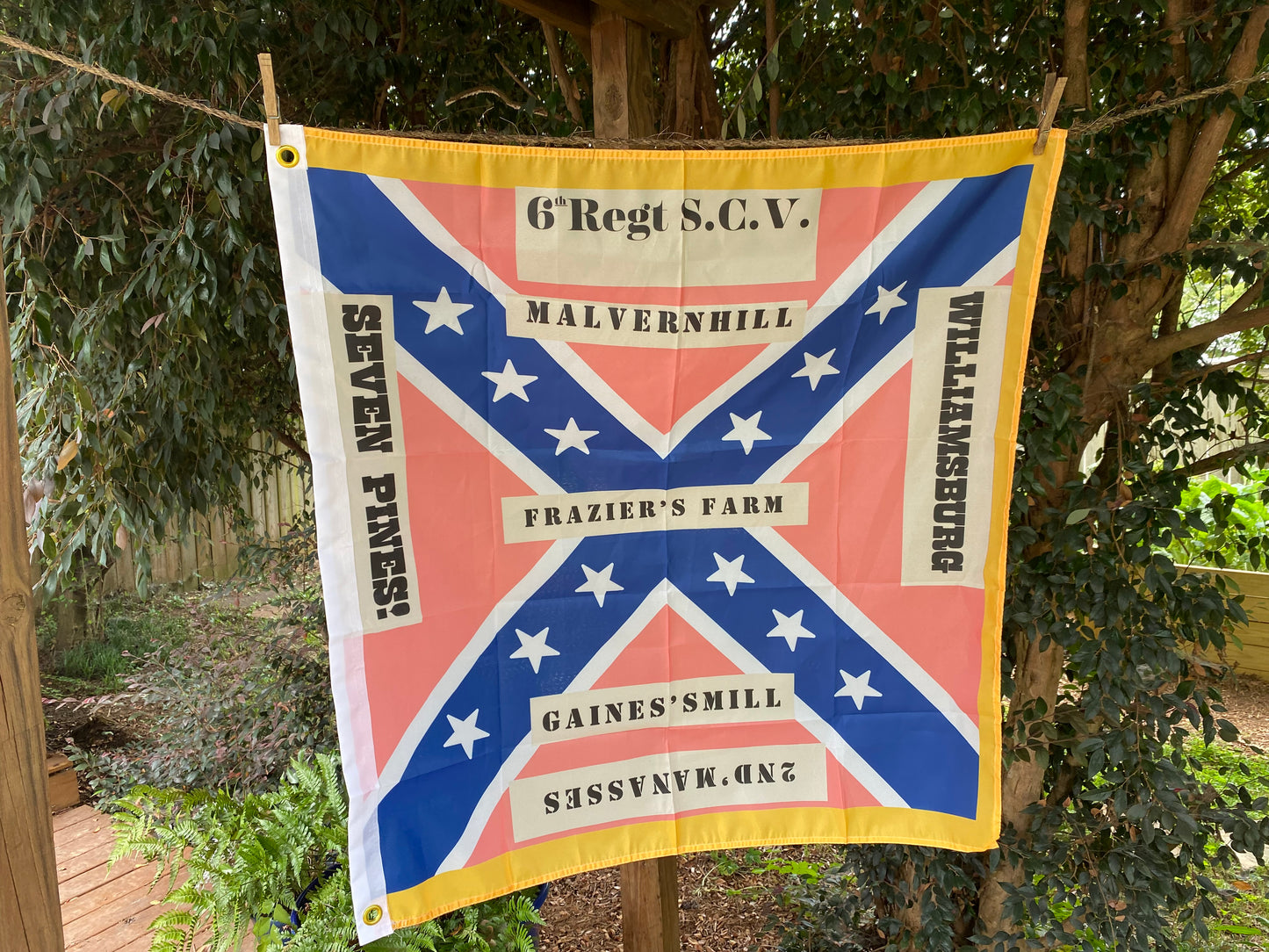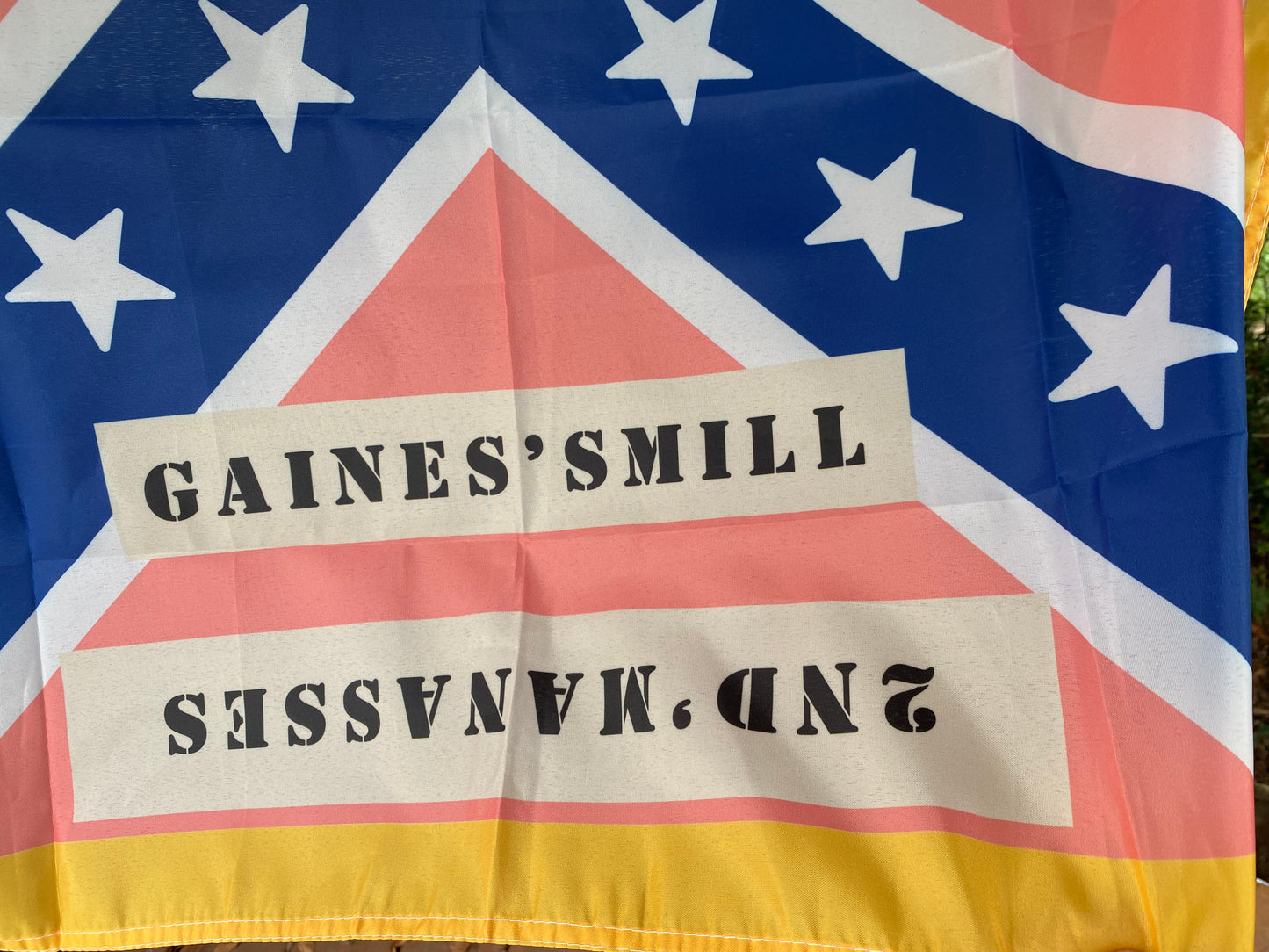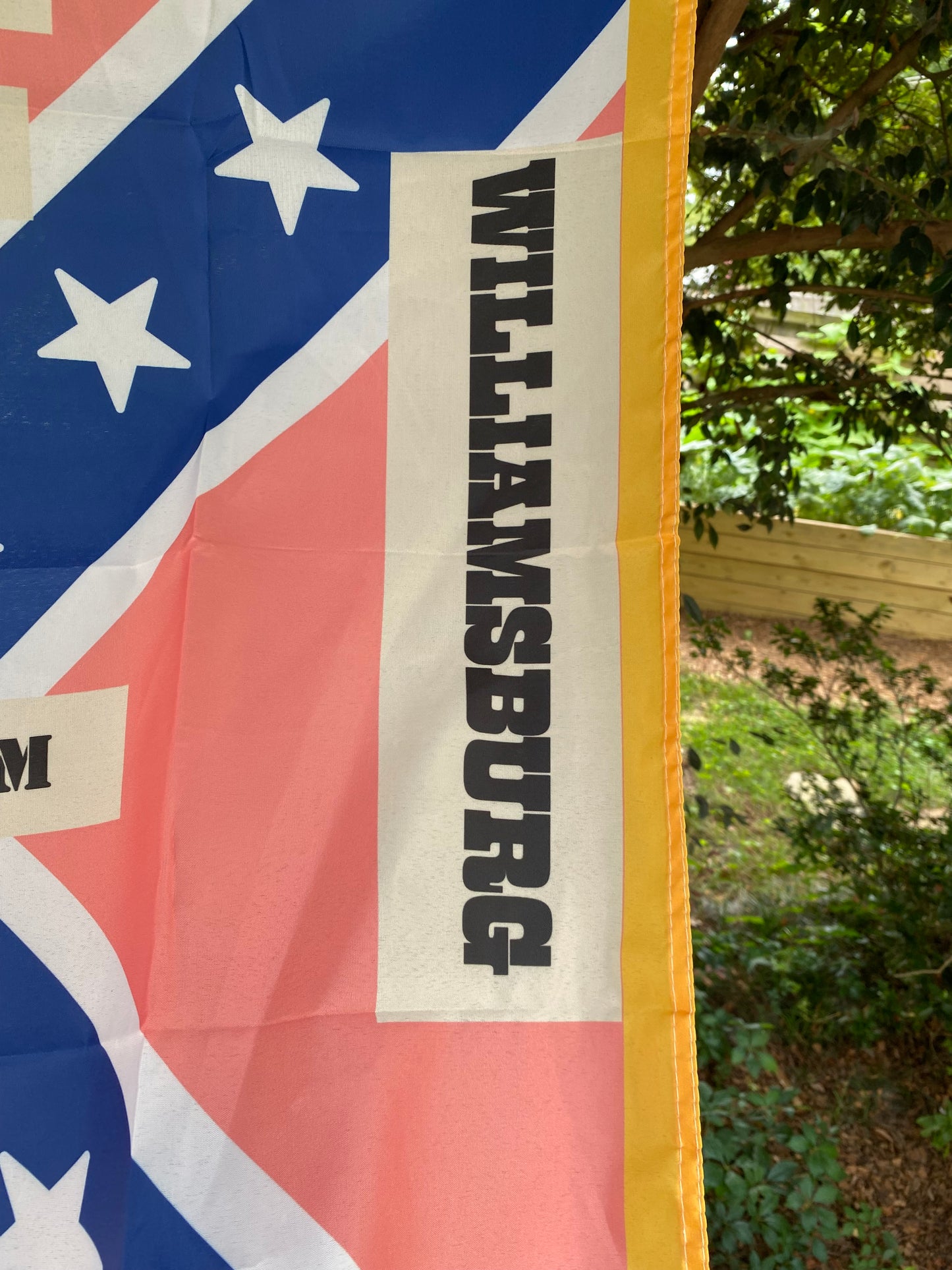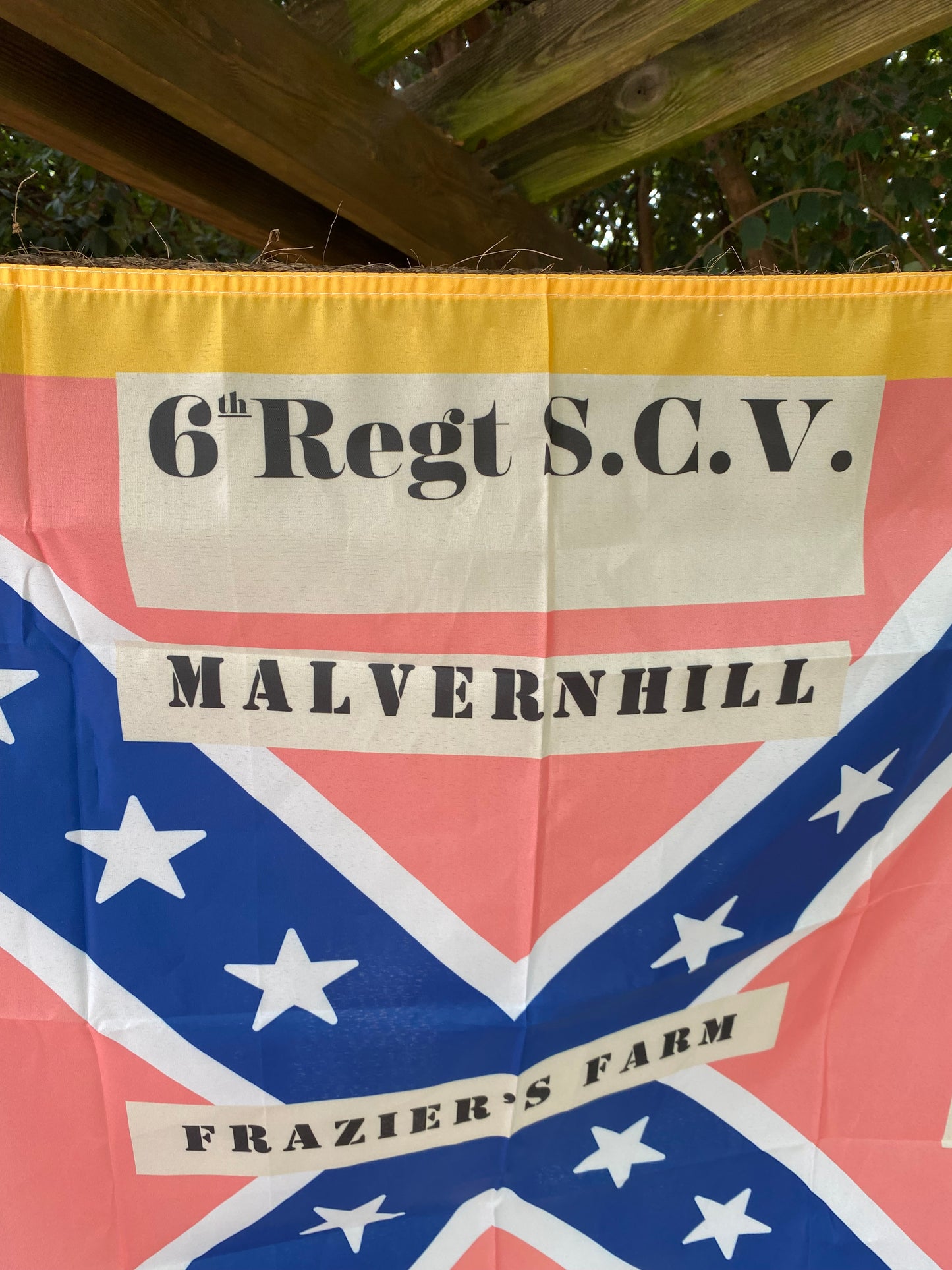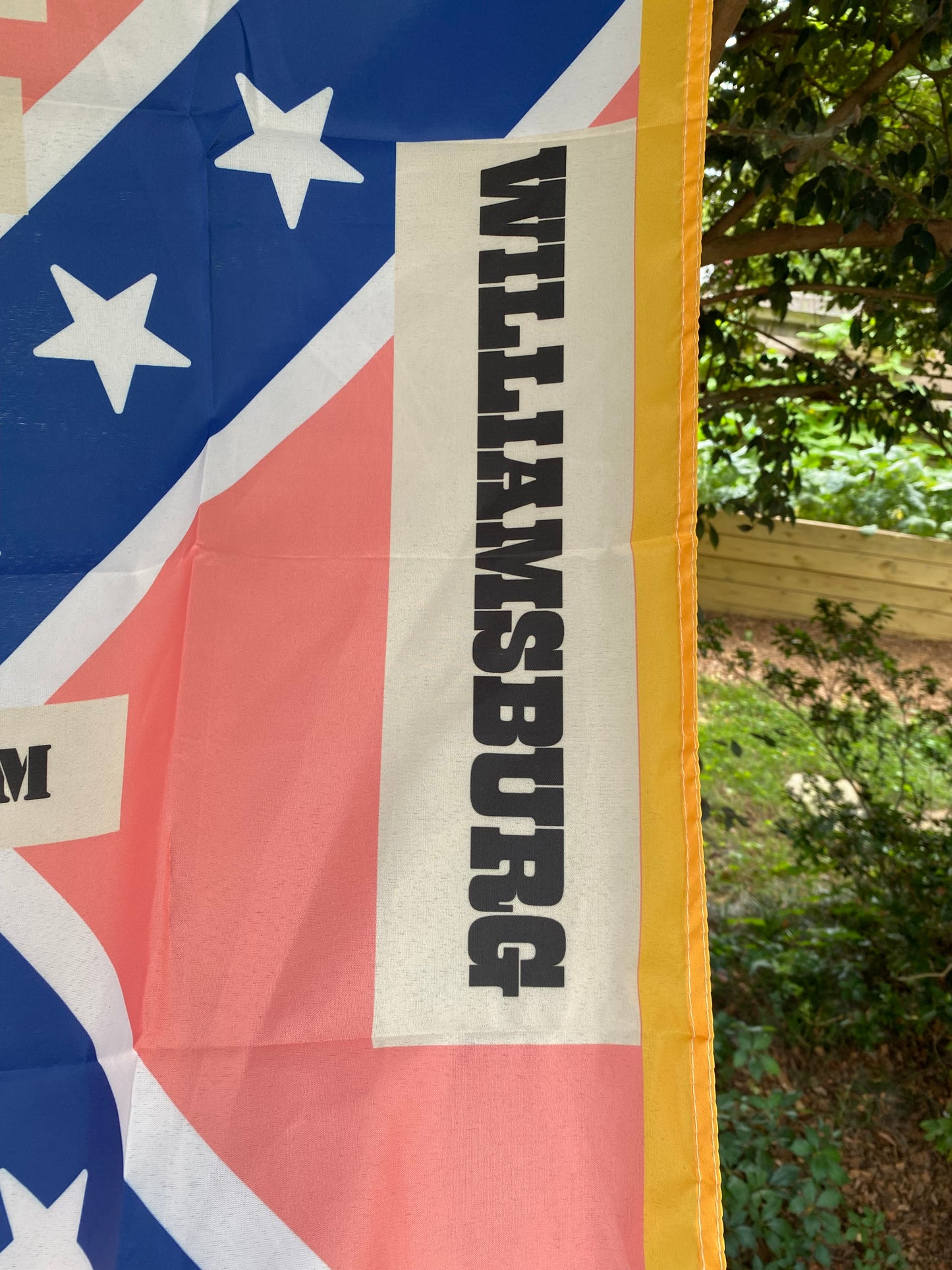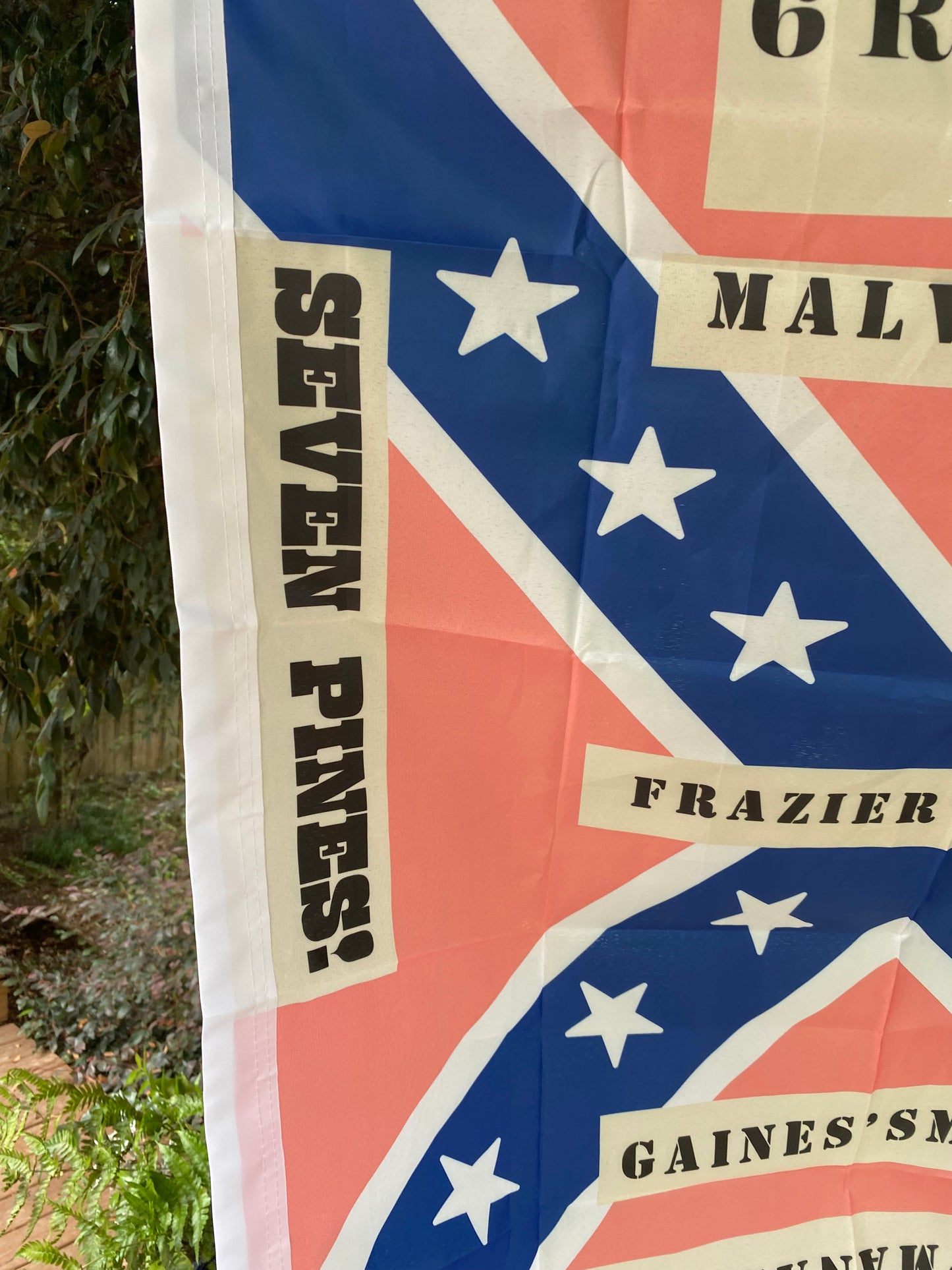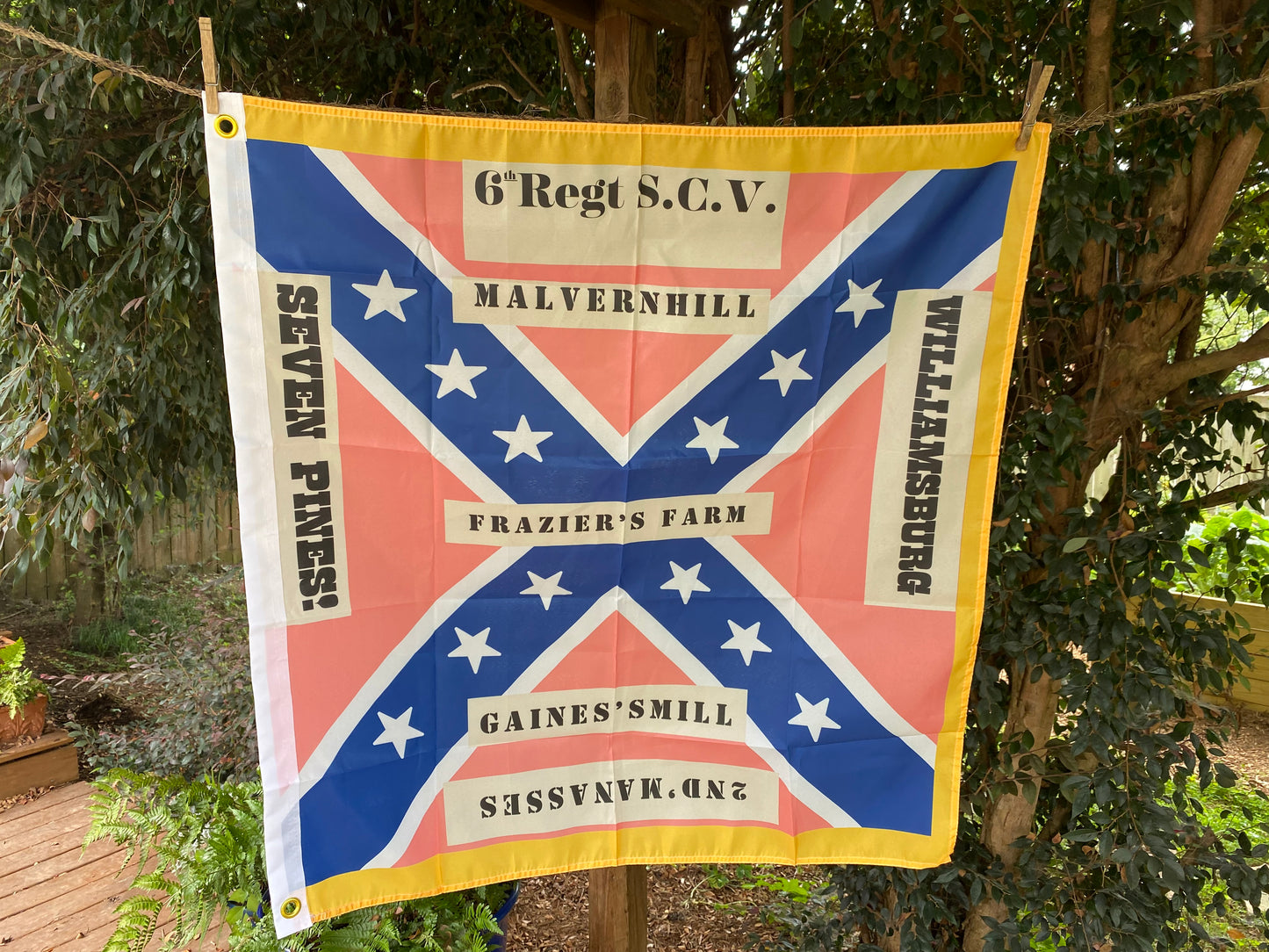Beauregard's Tailor
6th South Carolina "Silk Issue" Pink House Flag
6th South Carolina "Silk Issue" Pink House Flag
Couldn't load pickup availability
Historical Background:
Based either on the original water color drawing or a flag made from it, a number of battle flags sufficient to supply the Army of the Potomac were then ordered. Army Quartermaster Colin M. Selph bought the entire silk supply of Richmond for making the flags (and the only red-like colors available in bulk were either pink or rose, hence these flags being of lighter shades). The flag making was contracted to some Richmond sewing circles.
There were two basic design types made. The first type had gold stars painted on the cross, and a white hoist sleeve for the flag pole. There are two variantions of the first type: one having gold or yellow fringe on the three external edges of the flag; and the other having a white border in lieu of fringe.
The second type differed from the first in that the second type had white silk stars sewn to the blue saltire. Rather than fringe or a white border, the external edges of the second type were bound with yellow silk to form a 2″ wide border. It had a blue hoist sleeve for the flag pole.
Although the intent had been stated to have flags issued in different size for infantry, artillery and cavalry, no such size distinction was made in these silk flags. All of these flags are essentially 48″ square. There is, however, one flag of the second type used by the 6th Virginia Cavalry which has a pole sleeve of yellow (the cavalry branch colour).
Starting in late November, 1861, the new battle flags were then presented to the Confederate units at Centreville and into December for other units in nearby parts of Northern Virginia. The flags were presented to each regiment by Gens. Beauregard and Johnston, as well as other army officers, in elaborate parade ground affairs. The Richmond Whig newspaper article of December 2, 1861, tells of the presentation at Centreville on November 28:
“The exercises were opened by Adjutant General Jordan, who, in a brief but eloquent address, charged the men to preserve from dishonor the flags committed to their keeping. The officers then dismounted and the colonels of the different regiments coming forward to the center, Gen. Beauregard, in a few remarks, presented each with a banner, and was eloquently responded to. The regiments then came to ‘present’, and received their flags with deafening cheers.”
So was issued the first of the battle flags for what would become the famous Army of Northern Virginia. Despite the creation of this (and other) battle flags, the First National flag would not fall from use in battle. Examples of it being used for the rest of the war by Confederate units, including Lee’s army, are numerous.
Shipping Timelines
Shipping Timelines
These flags are made to order and take about 4 weeks to produce and ship.

